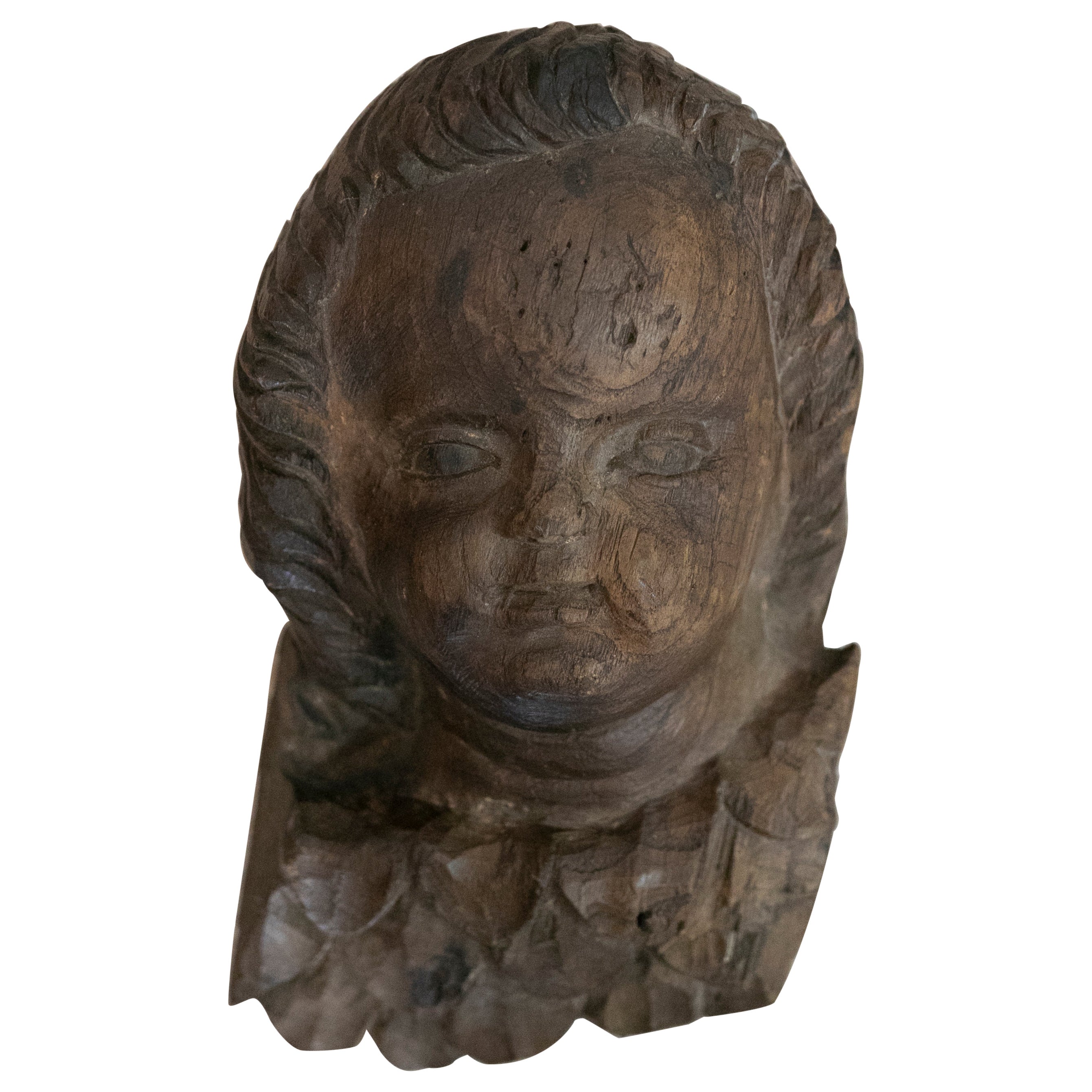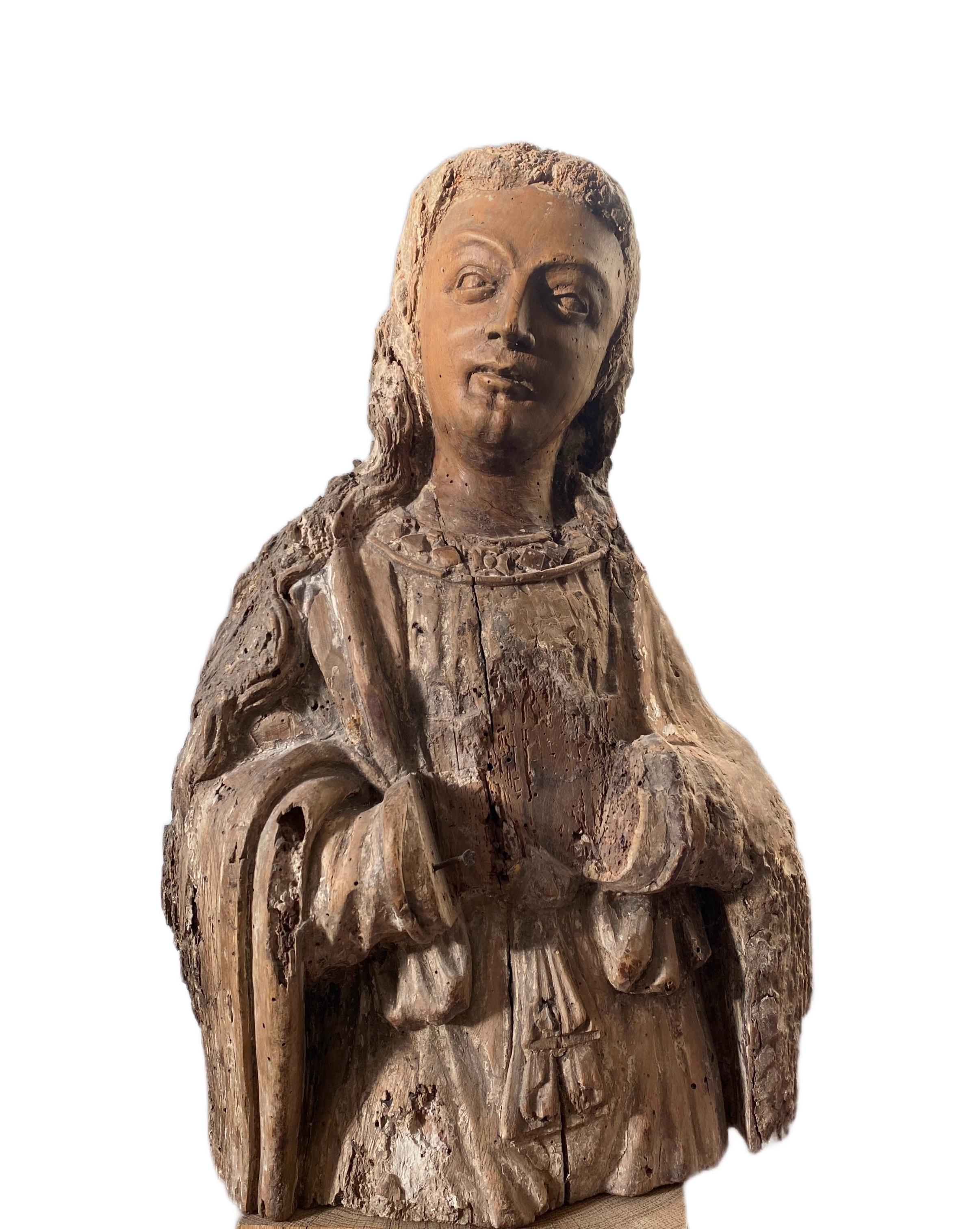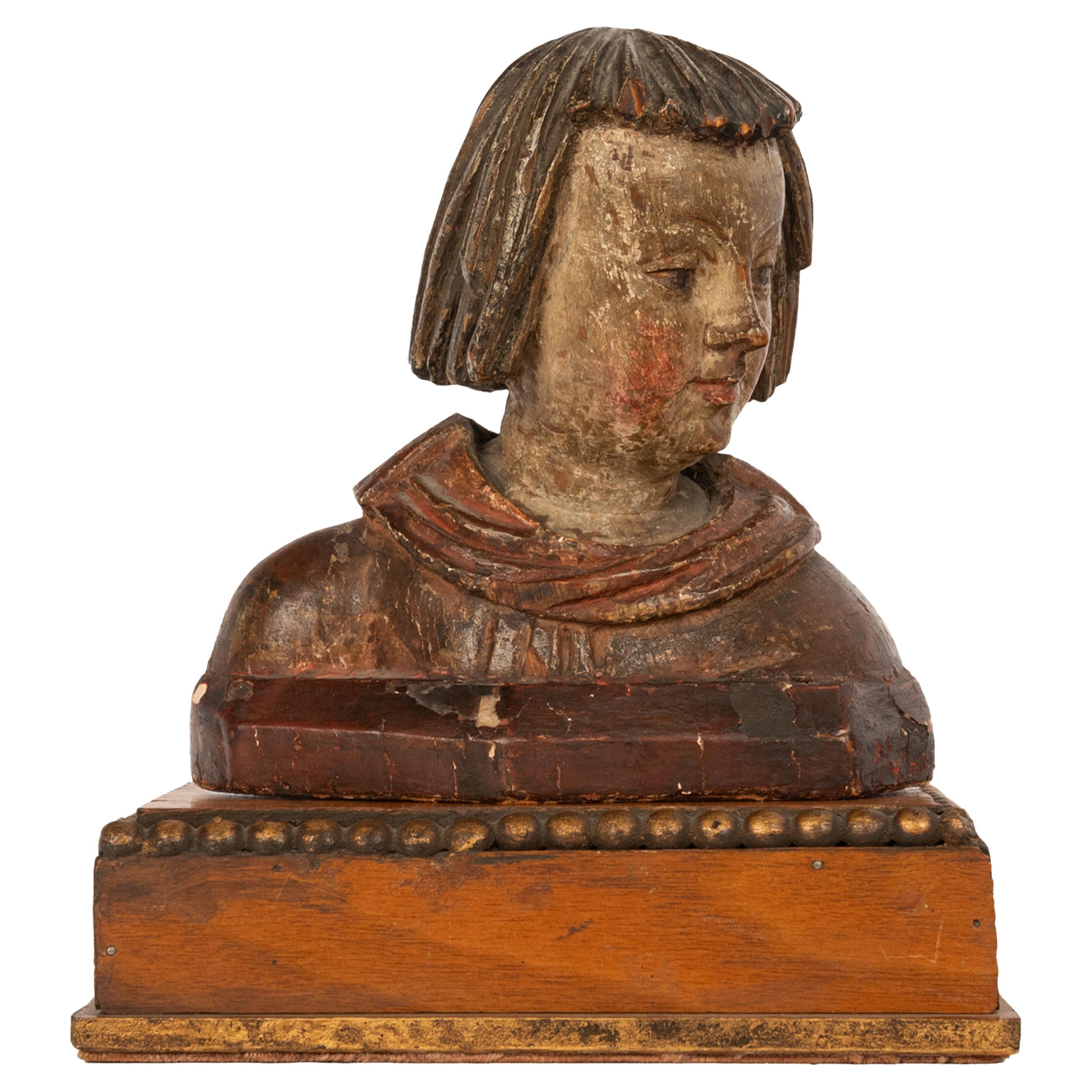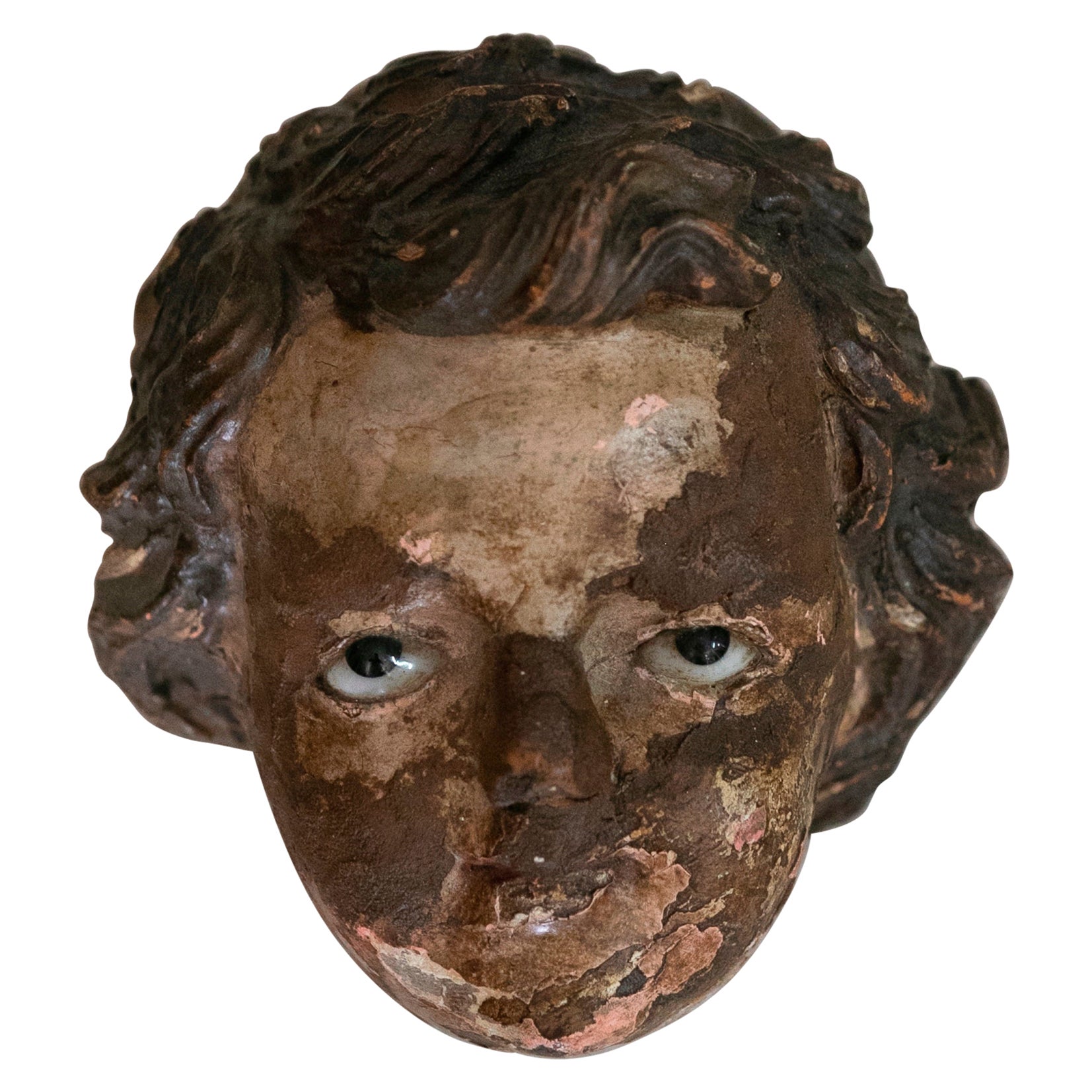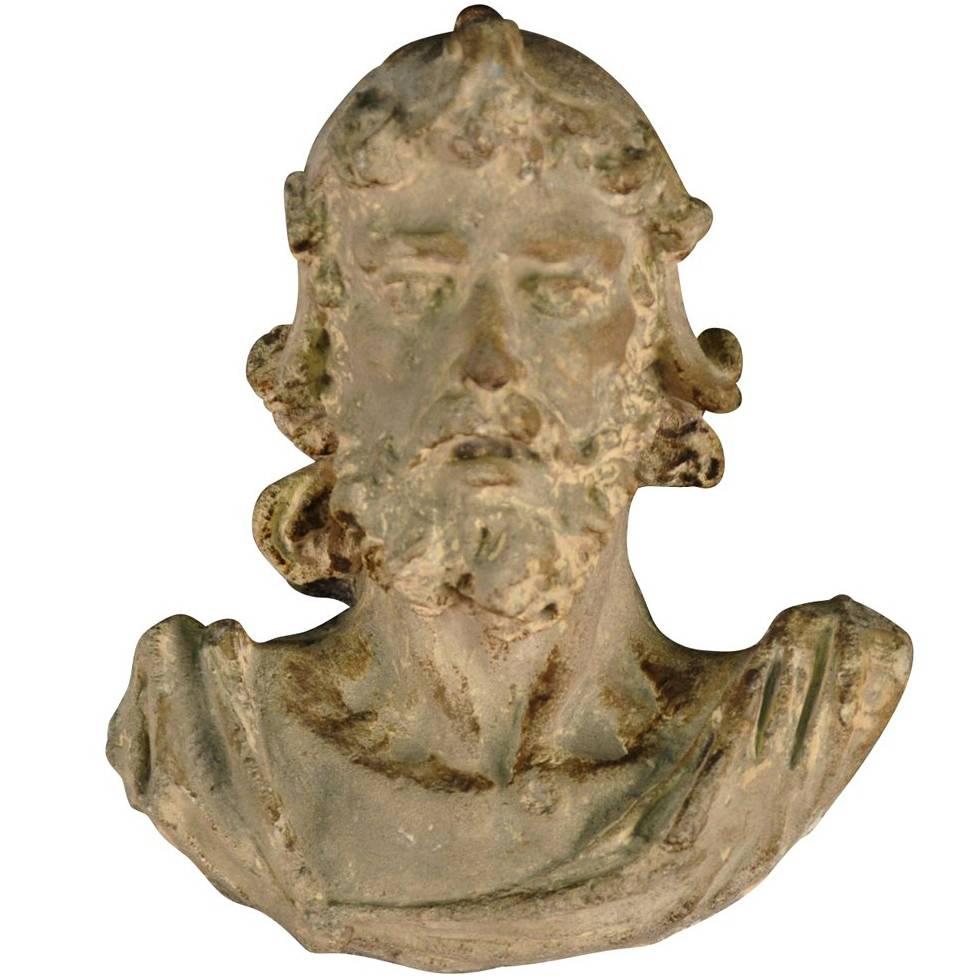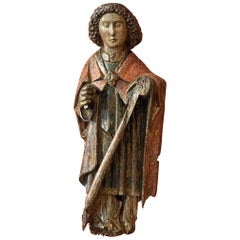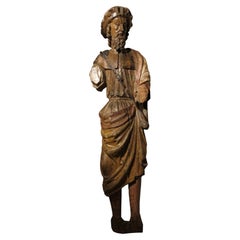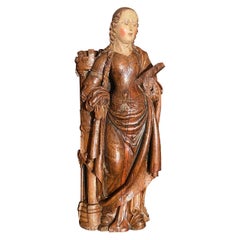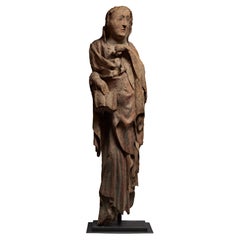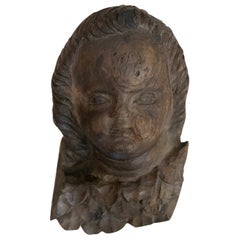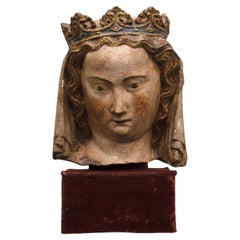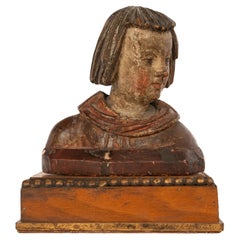Items Similar to 14th Century Sculpture of the Head of an Angel from East of France or Rhineland
Want more images or videos?
Request additional images or videos from the seller
1 of 7
14th Century Sculpture of the Head of an Angel from East of France or Rhineland
$14,377.72
£10,701.30
€12,000
CA$19,693.89
A$21,903.90
CHF 11,437.54
MX$266,547.17
NOK 146,074.79
SEK 136,992.38
DKK 91,351.81
Shipping
Retrieving quote...The 1stDibs Promise:
Authenticity Guarantee,
Money-Back Guarantee,
24-Hour Cancellation
About the Item
This face with prominent eyes, open mouth and beautiful hairs with symetrical undulations may be the face of the Archangel Gabriel.
- Dimensions:Height: 18.51 in (47 cm)Width: 11.03 in (28 cm)Depth: 9.85 in (25 cm)
- Style:Gothic (Of the Period)
- Materials and Techniques:
- Place of Origin:
- Period:
- Date of Manufacture:circa 1350
- Condition:Wear consistent with age and use. Minor losses. Minor structural damages. Minor fading.
- Seller Location:Saint-Ouen, FR
- Reference Number:1stDibs: LU3115327311182
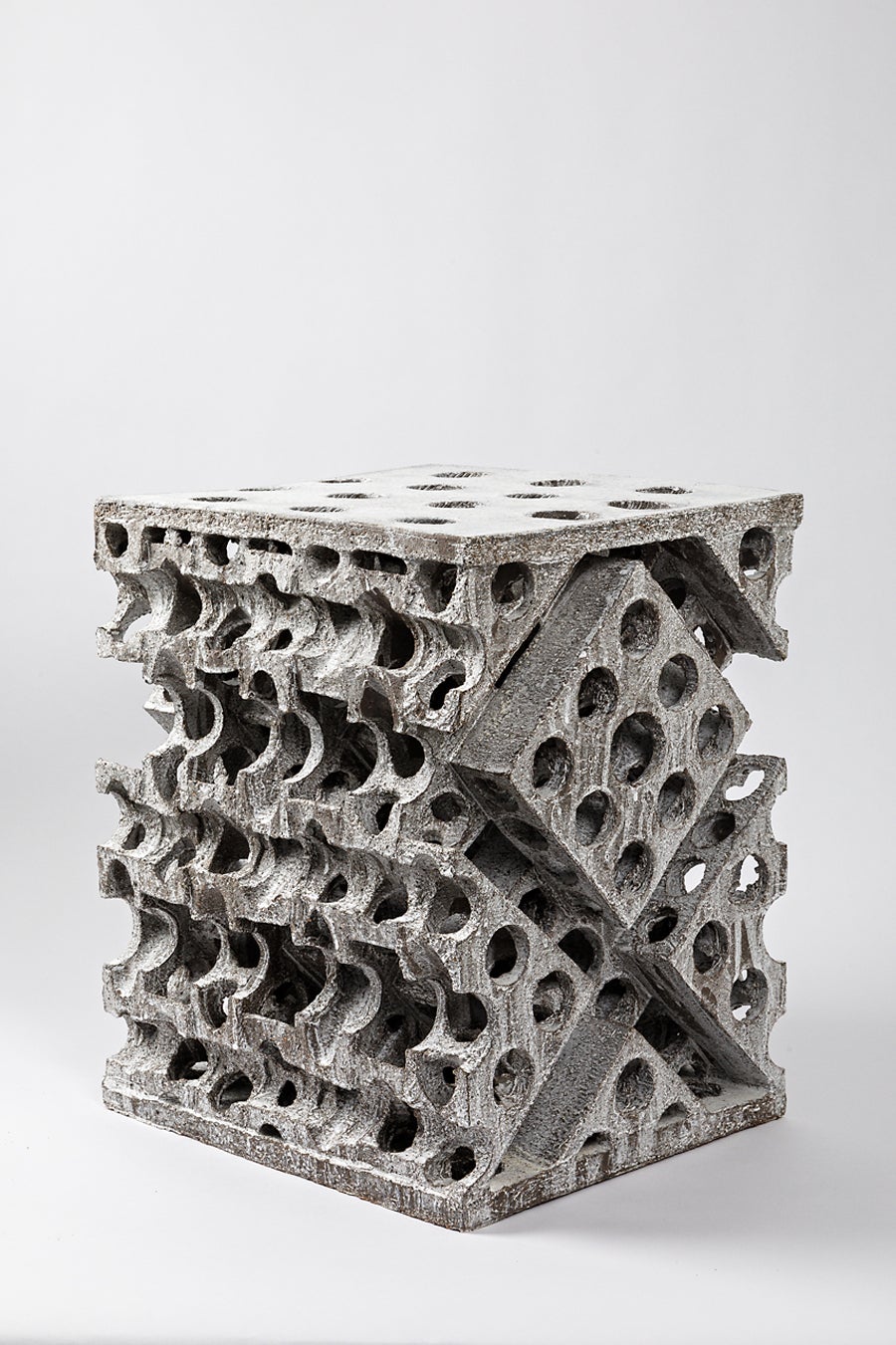
About the Seller
5.0
Vetted Professional Seller
Every seller passes strict standards for authenticity and reliability
Established in 2016
1stDibs seller since 2017
189 sales on 1stDibs
Typical response time: 3 hours
- ShippingRetrieving quote...Shipping from: Saint-Ouen, France
- Return Policy
Authenticity Guarantee
In the unlikely event there’s an issue with an item’s authenticity, contact us within 1 year for a full refund. DetailsMoney-Back Guarantee
If your item is not as described, is damaged in transit, or does not arrive, contact us within 7 days for a full refund. Details24-Hour Cancellation
You have a 24-hour grace period in which to reconsider your purchase, with no questions asked.Vetted Professional Sellers
Our world-class sellers must adhere to strict standards for service and quality, maintaining the integrity of our listings.Price-Match Guarantee
If you find that a seller listed the same item for a lower price elsewhere, we’ll match it.Trusted Global Delivery
Our best-in-class carrier network provides specialized shipping options worldwide, including custom delivery.More From This Seller
View AllSmall Sculpture of an Angel
Located in Saint-Ouen, FR
SMALL SCULPTURE FIGURING AN ANGEL
ORIGIN : GERMANY
PERIOD : 15TH CENTURY
Height: 48,5 cm
Width : 20 cm
Depth : 12 cm
Category
Antique 15th Century and Earlier Figurative Sculptures
Materials
Wood
15th Century Carved Wood Depicting Saint James
Located in Saint-Ouen, FR
The Saint depicted here is Saint James the Great.
James is the brother of St. John the Evangelist. Nothing is known of his activities after the Ascension...
Category
Antique 15th Century and Earlier French Gothic Figurative Sculptures
Materials
Oak
Important Sculpture Representing Saint Barbara
Located in Saint-Ouen, FR
IMPORTANT WOOD SCULPTURE REPRESENTING SAINT BARBARA
ORIGIN : NORTHERN FRANCE OR FLANDERS
PERIOD : 16th CENTURY
Height: 103 cm
Length: 40 cm
Depth: 30 cm
Oak wood
Good condition
Saint Barbara was the daughter of Dioscorus who imprisonned her in a tower to prevent her from being corrupted by Christianity. Despite this, she was taught and baptisted by a local priest. According to legend, she proved her faith by carving a third window into the tower, symbolic of the Trinity.
Once her father learned this, he threatened her with his sword. She managed to escape and hide, not before being revealed by a sheperd. She was thrown in jail and tortured, refusing to denounce her faith. Her father forced her up to the mountain’s summit and decapitated her, afterwhich God struck him down by lightning.
Saint Barbara`s following was popularized in the Occident in the 13th century because of the Golden Legend...
Category
Antique 16th Century Figurative Sculptures
Materials
Oak
Saint Woman in polychrome carved wood
Located in Saint-Ouen, FR
SAINT WOMAN IN POLYCHROME CARVED WOOD
ORIGIN : ITALY
PERIOD : late 13th century
Height : 103 cm
Length : 28 cm
Width : 16 cm
Remains of polychromy
...
Category
Antique 15th Century and Earlier Italian Gothic Figurative Sculptures
Materials
Softwood
13th Century Virgin and Child from Catalonia
Located in Saint-Ouen, FR
Seating on a bench-like throne the Virgin carries her child on her left knee.
She bears an important crown high on her head .The Virgin has an ovoid face with bulging eyes, straight long nose and thin lips. The hair parts in the middle and are carved as thick horizontals parallel hair strands...
Category
Antique 15th Century and Earlier Spanish Gothic Figurative Sculptures
Materials
Oak
Wood Sculpture Depicting John the Baptist
Located in Saint-Ouen, FR
This wood scultpure showing fine traces of polychromy depicts John the Baptist, one the Old Testament’s last prophets and the first martyr of the New Testament. He is easily recognizable with the lamb he is carrying in his left hand. The way the artist has carved the face exudes a spiritual strenght inherited from previous centuries.
Description
Saint John the Baptist is depicted bare feet, seated in a hieratic manner. His elongated face is marked by a beard and a moustache. The straight nose and wide eyes indicate a Spanish origin. This asumption is reaffirmed by the Saint’s resigned expression.
His parted hair frames his face while uncovering his ears.
He wears a round collar red-orange tunic, draped onto the body and belted at the waist. A flap of his green coat covers his knees and falls down in stylized pleats.
Following iconographic rules Saint John the Baptist is pointing with his right hand the lamb seated...
Category
Antique 15th Century and Earlier Spanish Gothic Figurative Sculptures
Materials
Wood
You May Also Like
18th Century Angel's Head Sculpture Handcarved in Wood
Located in Marbella, ES
18th century Angel's head sculpture handcarved in wood.
Category
Antique Mid-18th Century Spanish Busts
Materials
Wood
Head of a crowned Virgin - Lorraine, first half of 14th century
Located in Bruxelles, BE
Head of a crowned Virgin
Lorraine, first half of 14th century.
H26 x 14 x 14 cm
Provenance :
- Private Collection, Paris France (1960)
Private Collection Tuscany, Italy (1980)
Ex...
Category
Antique 15th Century and Earlier French Gothic Figurative Sculptures
Materials
Limestone
Gothic Renaissance wooden sculpture: bust of a young Saint or Angel
Located in Norwich, GB
This young saint or angel has suffered over the centuries, but his spirit has not been broken - and miraculously, his beautiful face has remained intact. With a gentle face and an al...
Category
15th Century and Earlier Gothic Figurative Sculptures
Materials
Wood
Antique Catholic German Renaissance Carving Bust Stephan Rottaler Landshut 1500
Located in Portland, OR
An exceptionally rare antique German Renaissance carving by Stephan Rottaler (1581-1533), Bavaria circa 1500.
The carving is by Stephan Rottaler, Landshut, Germany, an architect who ...
Category
Antique 16th Century German Renaissance Busts
Materials
Gesso, Wood
18th Century Spanish Wooden Angel's Head with Vitreous Paste Eyes
Located in Marbella, ES
18th Century spanish wooden angel's head with vitreous paste eyes.
Category
Antique Mid-18th Century Spanish Figurative Sculptures
Materials
Glass, Wood
16th Century Head Of A Noble
Located in Round Top, TX
A very striking 16th century statue - head of a nobleman - crafted from Roman concrete - opus caementicium. Roman concrete is durable due to its incorporation of volcanic ash, which...
Category
Antique 16th Century Italian Figurative Sculptures
Materials
Coade Stone
More Ways To Browse
15th Century Gothic
Gothic Angels
French Angel Sculpture
Gothic Wood Sculpture
Angel Face Wood
15th Century Angel
15th Century Wood Angel
Sword Stand
Mannequins
Hand Carved African Sculptures
Oriental Sculpture
Thai Carved Furniture
20th Century Marble Statues
Vienna Bronze Painted
Napoleon 3 Furniture
Spanish Lladro
Giacometti Style Sculpture
Roman Foot
